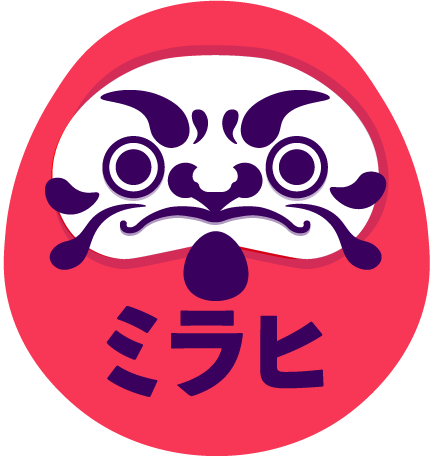Harnessing My Design Skills for Marketing Mastery: A Journey of Integration and Innovation
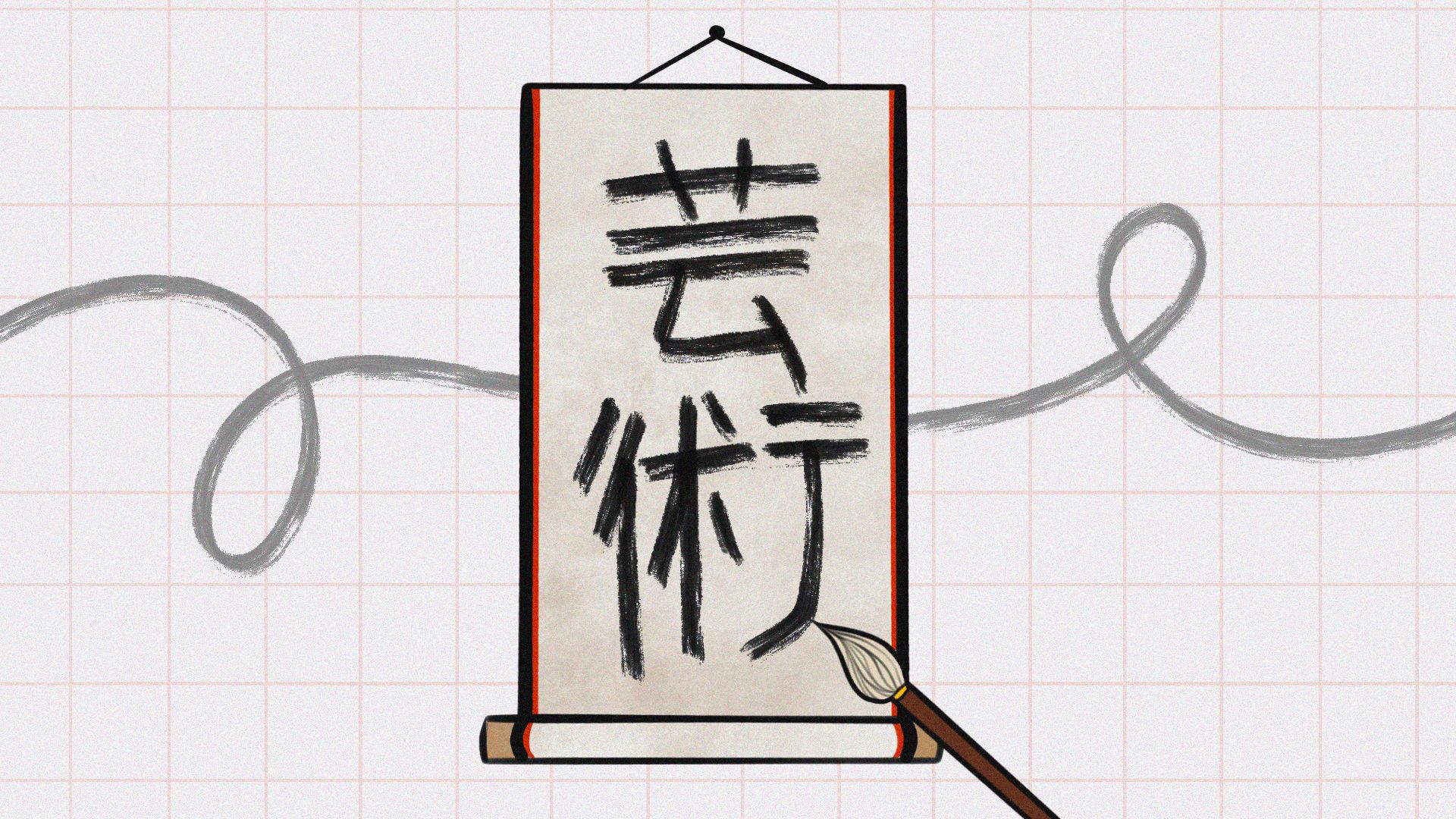
When people hear the word 'design', they might immediately think about art, graphics, or aesthetics. But as someone who has navigated the complex world of marketing with a design background, I can tell you that it goes beyond just making things look good. Design, in essence, is about problem-solving, creativity, and communication — vital skills for any successful marketer. Let me take you through my journey of how I utilize my design skills in the realm of marketing.
My Background
Who am I? I'm Charlotte, holder of a Bachelors Degree in Graphic Design. Like many fresh graduates, I was excited to dive into my field, ready to make my mark through compelling visuals and thoughtful design. However, I quickly discovered that, while graphic design was rewarding, it wasn't the only thing I wanted to dedicate my life to.
My creative journey started long before my graphic design degree. I've been an artist at heart, dabbling in traditional and digital art as a hobby. This passion for art opened a door to a different world when I began exploring the world of marketing and communication. It felt like the final piece of the puzzle, perfectly complementing my artistic abilities with strategic thought.
Marketing was a revelation to me. It embodied the best of both worlds - an exciting fusion of art, design, and strategic communication. It was a field where I could combine my love of art and design with the opportunity to use my talents to make a difference.
Then Mirahi came into my life. A place where I could spread my creative wings and fully utilize my artistic abilities, as well as my graphic design experience. Every day at Mirahi provides me with the opportunity to combine creativity with strategy, to utilize art to connect, engage, and leave a lasting impression.
Collaborating with the Design Team and the Design System
In today's business world, different companies have varying levels of teamwork between their design and marketing teams. Some companies work closely together, while others work separately because of specific company or situational challenges. For example, companies in different locations or those in very specialized industries might have a hard time collaborating. These issues can prevent ideas and information from flowing freely, which could cause inconsistency in branding and communication.
However, at Mirahi, we believe in strong teamwork, especially between our design and marketing teams. Our teamwork strategy relies on using common tools like user personas, Figma files and templates. These tools help us better understand and reach our target market. Although the design and marketing teams have different jobs, we aim to find areas where we can work together. This helps us keep our brand consistent across all areas.
In my own work, I work closely with the design team, even on small details. For example, when I make presentations for the whole company, I use the fonts and guidelines that the design team has created. This helps keep our visuals consistent and strengthens our brand across all our internal communications. This teamwork helps us create a unified brand image, showing how important it is for the design and marketing teams to work well together.
All of our rules about colors, fonts, and logo use are compiled into a single resource known as a design system. This system is our most critical tool for ensuring effective collaboration between our design and marketing teams.
A crucial step for me was learning to leverage the design system in place. This is a collection of standards and principles used by designers in their work, from typography and colors to user interface elements and design patterns.
The best aspect is that you no longer have to ask the designers for color codes or sample them from current templates and images. I can simply go to the color styles and select any of the pre-determined colors.
Want to get started with Design Systems? Then read our blogpost about it here!
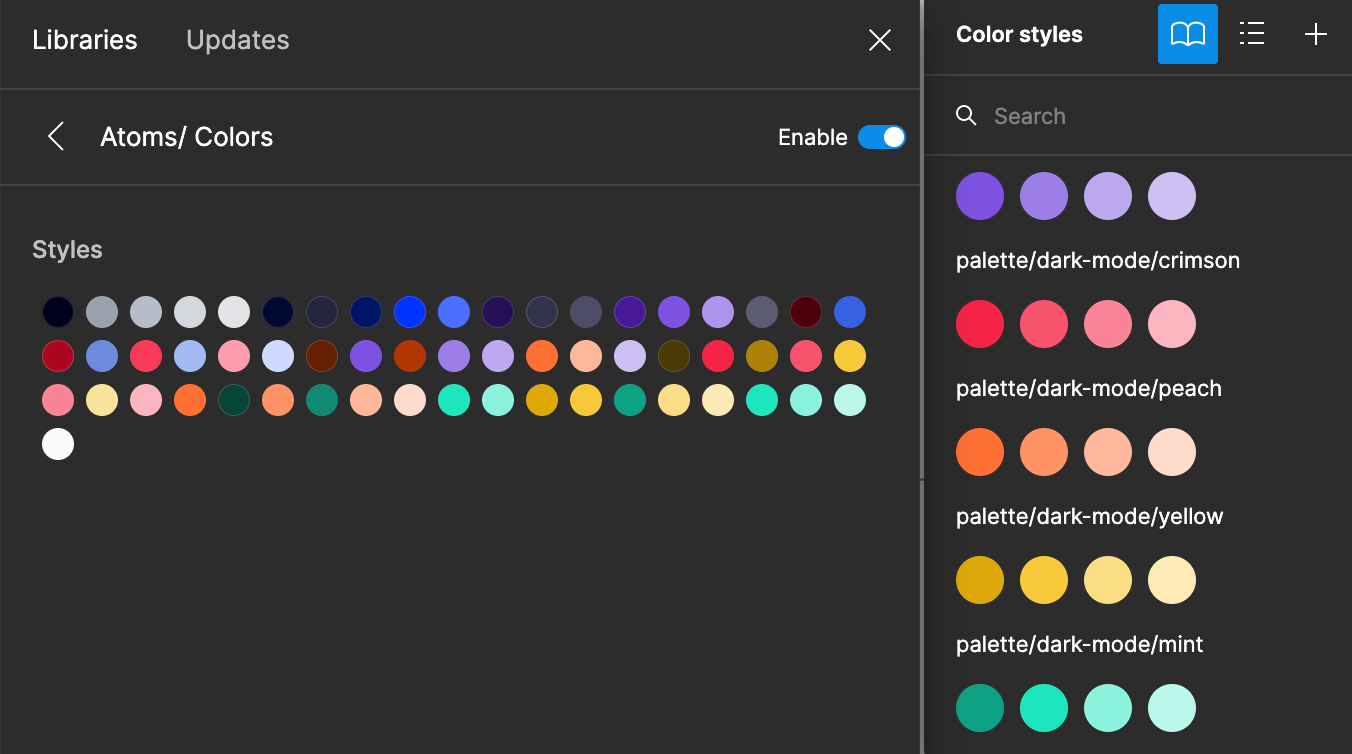
How People & Culture has Its own impact to Design and Marketing
Marketing isn't just about selling products or services; it's about creating a brand persona that resonates with the audience on an emotional level. This is where the People & Culture lead of an organization comes into play.
The relationship between People & Culture and Marketing may not be immediately apparent, but these two functions can work together in significant ways. At Mirahi, we understand the importance of merging these two areas to build a stronger team and enhance our employer branding.
Together with our People & Culture lead we decided to go shopping with a long shopping list blabla, was not easy, had to be sustainable, had to fit our budget, had to be reusable, certain amount of whimsy because we are fun, not boring.
During one holiday season, I was involved in the delicious craziness of Christmas shopping with Justine, our People & Culture Lead. The holiday joy was contagious, but we were on a special mission. We sought to locate gifts that were pleasant while also deviating from the well-worn road of popular consumerism. The goal was not simply to discover something unusual for the sake of being unusual, but to locate products that actually expressed what we at Mirahi cherish. This yearning for the unconventional, yet professional is profoundly ingrained in our DNA. We live on novelty and welcome the odd with open arms. It wasn't just about following the tried-and-true holiday customs that Christmas; it was about developing our own, in a way that reflected our individual attitude.
In essence, this unconventional approach to Christmas shopping is about more than just finding exciting, one-of-a-kind gifts. It's also about valuing diversity, fostering inventive design, and understanding the need of personalisation in marketing. It's a viewpoint that stretches far beyond the holiday season and is woven into our daily lives.
Photos from that amazing Christmas party now hang all over our office walls, reminding us of our unique team spirit and the culture we've created at Mirahi. Thanks to these photos and the atmosphere they create, visitors to our office can instantly feel the energy and understand what our brand represents. Thus, collaboration between our People & Culture and marketing teams not only increased internal team bonding but also aided in the development of a compelling and authentic employer brand.
Workflow Optimization
Figma Templates
As a marketer, time and consistency are two elements I deeply value. This is where the power of templates comes into play. Templates are pre-designed formats for different types of content, whether that be newsletters, social media posts, advertisements, or blog posts. They serve as a structural blueprint, providing a framework that ensures aesthetic coherence and brand uniformity across all marketing materials.
Using templates doesn't just save time by eliminating the need to start from a blank slate each time. It also allows us to focus more on the content itself – the message we want to deliver and the story we want to tell.
I rely heavily on templates on a daily basis. I have a lot of things to do, but I still need to publish on social media. Sometimes there simply isn't enough time. God bless those templates throughout those times! It's simply a matter of selecting a template, occasionally changing the colors (since seeing the same color all the time gets old after a while), and tweaking the text and/or graphics!
I even have my own template section within the Mirahi Design System, where I can find all of the templates I've ever created.
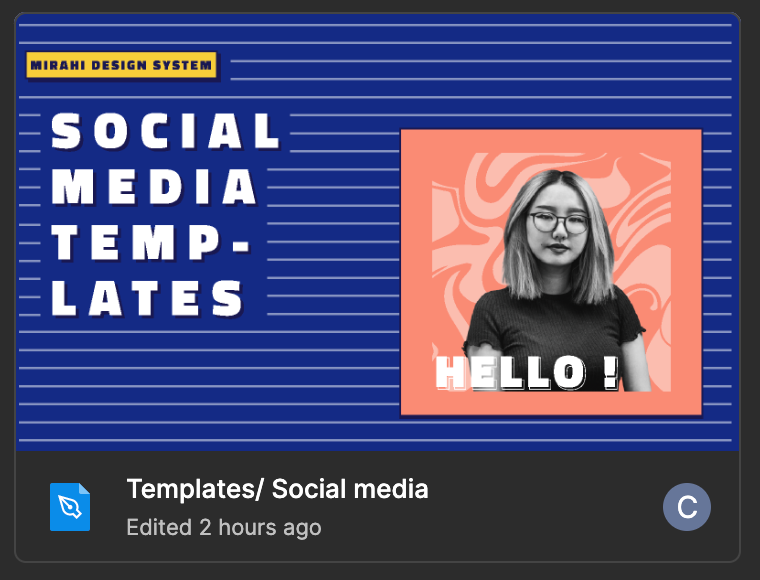
Powerpoint Templates
PowerPoint templates are another great tool that helps me, and the entire team, save time and ensure consistency in our presentations. Drawing on the brand guidelines from the Mirahi Design System, I've created a set of PowerPoint templates that align with our brand's identity.
Creating these templates required a thorough understanding of our brand guidelines, including the specific colors, fonts, and graphics that make Mirahi, Mirahi. With these templates, we no longer need to start each presentation from scratch or worry about maintaining visual consistency - the groundwork is already laid out.
These templates not only streamline the creation process for me but also for the entire team. Regardless of who's making the presentation, we can quickly select a template, adjust the content as needed, and be confident that the final product will represent our brand accurately.
The ability to effortlessly create professional, branded presentations allows us to spend more time refining our message and less time worrying about design details.
As a result, our internal and external communication initiatives have become far more efficient and effective.
Art in Marketing: More than Just Swag
One unique aspect of my approach to marketing is how I use my art. Art has a way of evoking emotions and connecting with people on a deeper level. This isn't just about designing swag items like t-shirts and mugs, but creating marketing materials that resonate with our target audience.
Art, in its essence, is a powerful form of communication that has the ability to stir emotions and forge connections. This quality is extremely valuable in marketing as it allows us to create a deeper bond with our audience. It's about creating meaningful experiences that engage with our target audience, rather than simply producing visually nice things. I've used my art skills to create social media posts, blogpost illustrations, and even murals.
Mirahi Mural
About that mural, my bosses wanted a distinctive design for our Dragon Ball Room. Previously, I mostly created my graphics on Procreate for iPad, but for this enormous piece, I switched to Clip Studio Paint and a Wacom (many thanks to Josué for providing me the program and tablet). It's fantastic to be able to create these office standout pieces. It's not something you'd expect a marketer to do! I'm glad they trusted my artistic abilities to make this happen. I had (almost) complete freedom over what I wanted to produce, so my ingenuity and artistic abilities were truly tested! I'm happy to say that it turned out fantastic. It's a wonderful eye catcher in our office, and the mural reflects our brand perfectly; it's all Japanese, with anime touches incorporated!
Interested in knowing more about the process of creating a mural? Then check out my other blogpost!
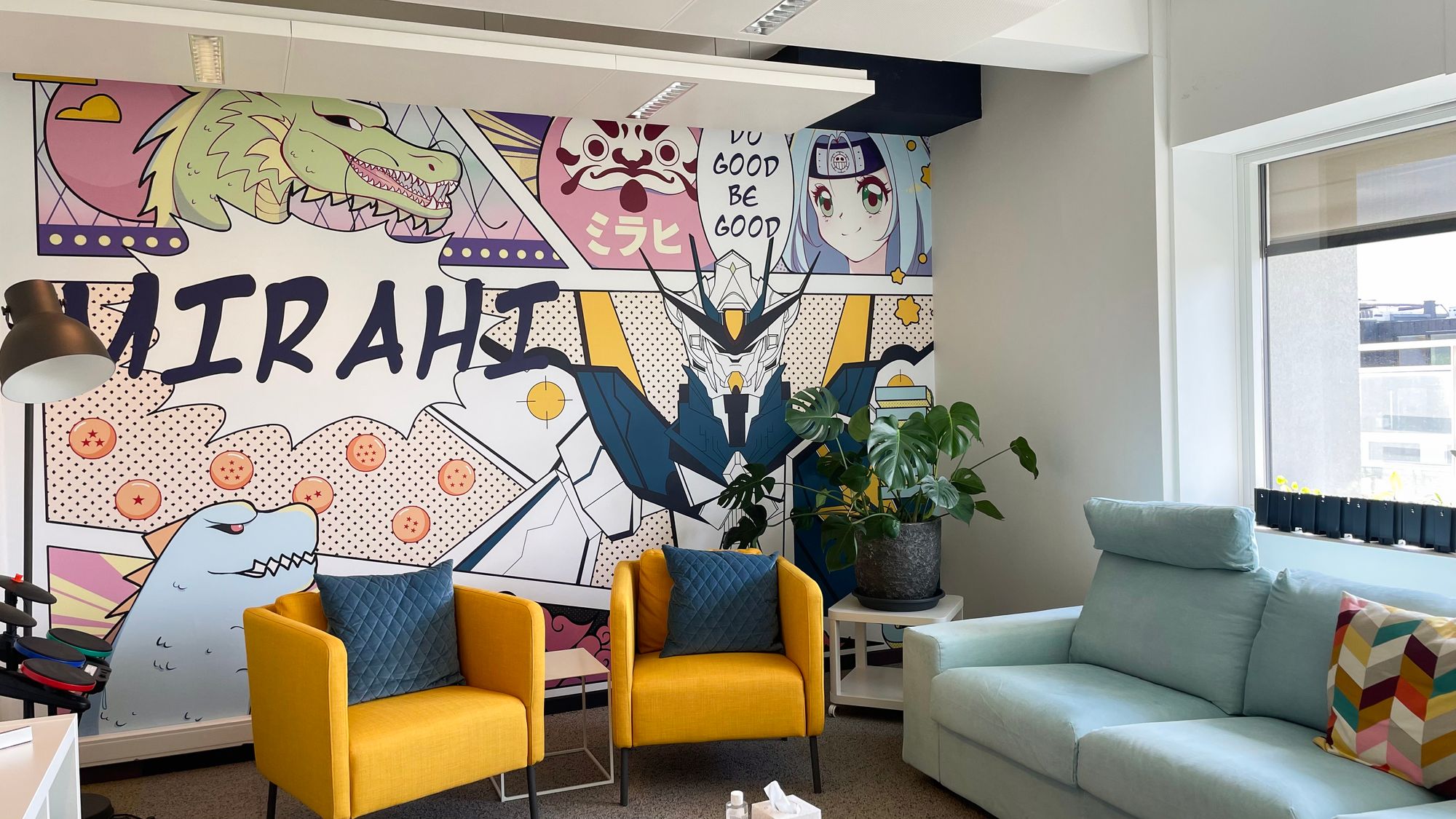
Digital Garden Illustrations
Our blog post drawings are one area where I can really show off my artistic abilities. I'm glad to be able to say that I created each and every one of them. Creating two illustrations every week can sometimes be a challenge, but resources like Pinterest and Google are wonderful for generating fresh ideas when I need some inspiration.
Our company has a deep link to Japan, which is reflected in practically all of my artwork.While the colors I use may not strictly follow our Design System, they are certainly similar. When you see these illustrations in a series, you can instantly recognize they represent Mirahi.
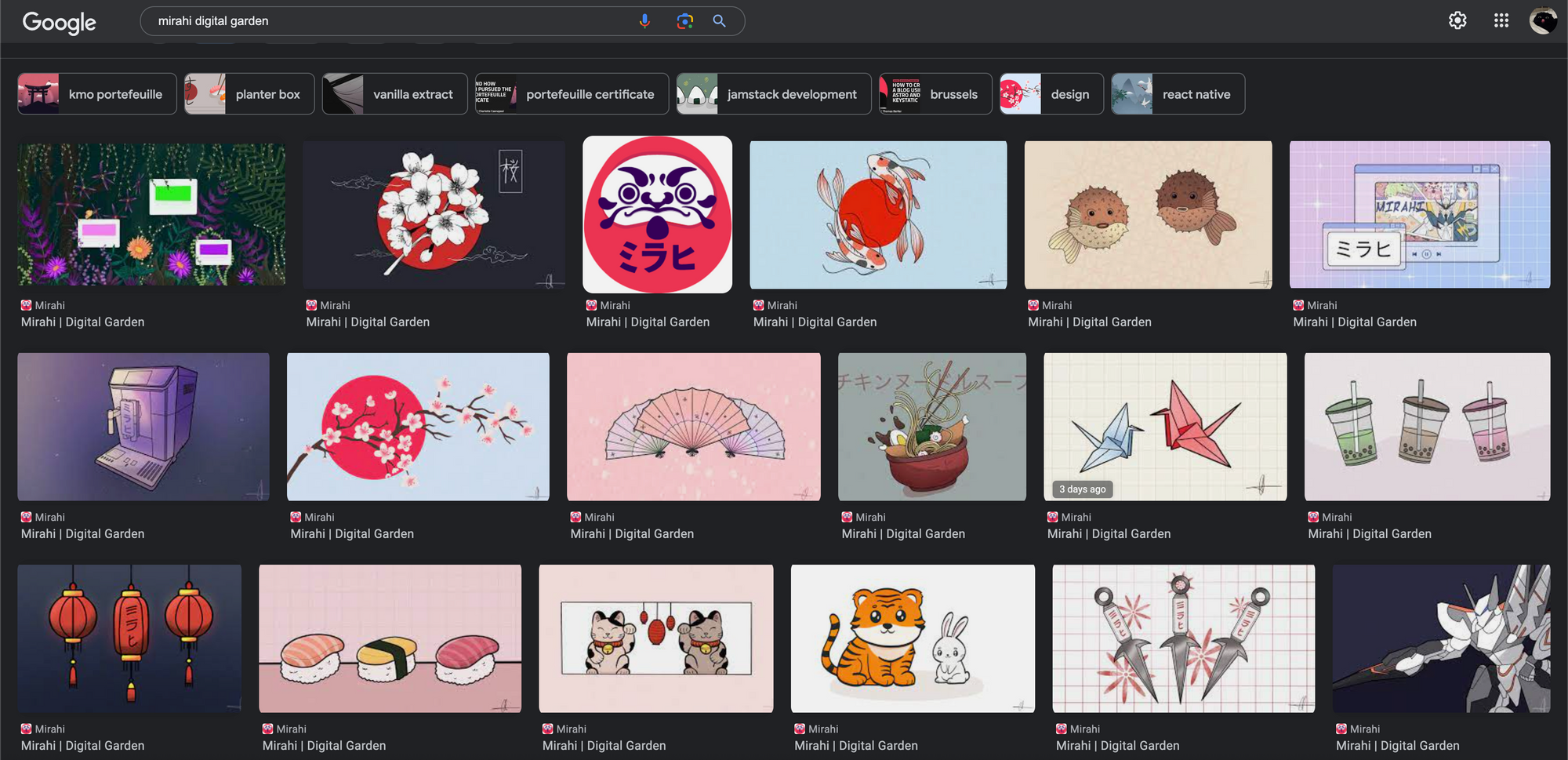
Leveraging My Graphic Design Background: A Fresh Perspective in Marketing
Embarking on a journey in marketing with a background in graphic design isn't the most conventional path, but it's one that has provided me with a unique perspective. My graphic design degree hasn't just honed my ability to create visually engaging content; it has also shaped how I approach marketing strategies and decisions.
Design is, at its core, a problem-solving discipline. Each design project begins with a challenge, a goal, and a target audience. These are aspects that are not foreign to marketing, which is fundamentally about communicating the right message to the right people at the right time. Therefore, my design training has provided me to approach marketing scenarios with a problem-solving mindset, allowing me to develop solutions that are not only creative but also effective.
Moreover, graphic design has instilled in me a keen understanding of visual communication. We live in a world increasingly dominated by visual content. Whether it's a social media post, a website, or an email newsletter, visuals play a critical role in capturing attention and conveying our message. With my design skills, I can create marketing materials that are not just visually appealing but are also strategically designed to guide the viewer's attention and evoke the desired response.
Graphic design also emphasizes the importance of understanding your audience, just like in marketing. It's about empathizing with their needs, wants, and expectations and creating designs that resonate with them. This mindset transfers seamlessly into my role as a marketer, where audience understanding forms the cornerstone of every decision, from content creation to campaign planning.
My graphic design degree has given me a unique perspective that intertwines aesthetics, problem-solving, and audience empathy. It enables me to approach marketing with a design-thinking mindset, which is about creating solutions that are not just attractive but also user-centric and effective.
The Intersection of Marketing and Design
Marketing and design are two sides of the same coin. Both fields require creativity, an understanding of the audience, and clear communication. As someone who exists at this intersection, I can say that integrating design-thinking into marketing strategies not only elevates the aesthetic value of the materials produced but also enhances the effectiveness of the message conveyed.
It's about telling a captivating story through words and visuals. It's about problem-solving, and most importantly, it's about human connection. And at the end of the day, that's what marketing is truly all about.
Conclusion
The fusion of design and marketing presents an innovative path that brings the best of both worlds. It's a union that reinforces the importance of creativity, problem-solving, and emotional connection in the realm of marketing. As a designer-turned-marketer, I've found an enriching, unique perspective that has enhanced my strategies, methodologies, and overall output.
My experience has taught me that design is not merely about aesthetics or decoration, but a crucial element that reinforces the message we want to deliver as marketers. It's about crafting stories that resonate, creating designs that echo our brand's voice, and most importantly, connecting with people on a deeper level.
The use of art, templates, and design systems have all played significant roles in shaping my marketing journey. Furthermore, integrating my understanding of people culture into our branding narrative has made our marketing more authentic and engaging.
Key takeaways from this blogpost:
1/ Use a Design System: A well-organized design system can provide a consistent set of guidelines for your brand, which helps maintain a unified image across different platforms and materials.
2/ Rely on Templates: Using templates can save significant time and maintain visual consistency. They provide a structured format for various content types, freeing up time to focus more on the message itself.
3/ Leverage Visuals: Remember that a single visual can often communicate more than a large block of text. Using compelling visuals is a powerful way to engage your audience, simplify complex information, and strengthen your brand's narrative.
So, whether you're just starting your journey in marketing or you're a seasoned professional, I encourage you to look into the value that design thinking and skills can bring to your work. It may just be the catalyst that propels your marketing strategies to new heights, and the key to building stronger, more meaningful relationships with your audience. After all, in the rapidly evolving world of marketing, it's the unique intersections of skills and perspectives that set us apart.
Find out how we created our Mirahi mural
